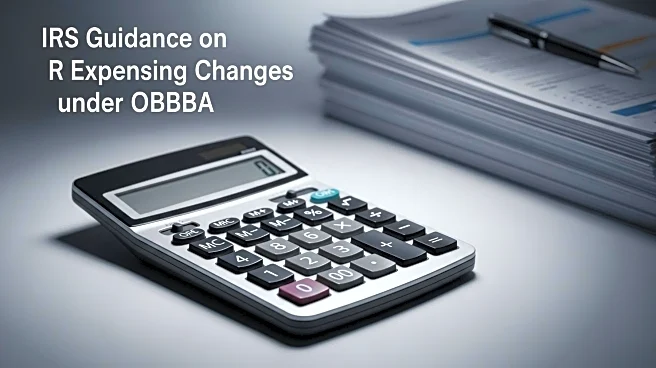What's Happening?
The Internal Revenue Service (IRS) has issued Revenue Procedure 2025-28, providing guidance on the treatment of research and experimental expenditures under the One Big Beautiful Bill Act. This new guidance reverses a previous requirement from the Tax Cuts and Jobs Act of 2017, which mandated the amortization of research and development costs over five years starting in 2022. Taxpayers can now choose to deduct these costs immediately, starting in 2024. The guidance includes transitional rules and modifies previous procedures, granting an extension for various entities to file superseding 2024 federal income tax returns. The IRS has faced challenges due to budget and staffing cuts, affecting its ability to provide timely guidance.
Why It's Important?
The IRS's new guidance on R&D expenditures is significant for businesses and taxpayers involved in research and development activities. By allowing immediate deductions, the guidance potentially reduces the tax burden on these entities, encouraging further investment in innovation. This change could impact the financial planning and tax strategies of corporations, partnerships, and other entities. The guidance also addresses a controversial issue under the One Big Beautiful Bill Act, providing clarity and flexibility for taxpayers. However, the IRS's resource constraints may affect its ability to offer comprehensive support and guidance in other areas.
What's Next?
Entities affected by the new guidance have until September 15, 2025, to file their superseding tax returns, creating a tight deadline for compliance. Tax professionals and businesses will need to quickly adapt to the new rules and make informed decisions regarding their tax filings. The IRS may need to issue further guidance on other aspects of the One Big Beautiful Bill Act, particularly concerning qualified production property and depreciation criteria. Stakeholders will be closely monitoring the IRS's ability to provide timely and effective guidance amid ongoing resource challenges.











